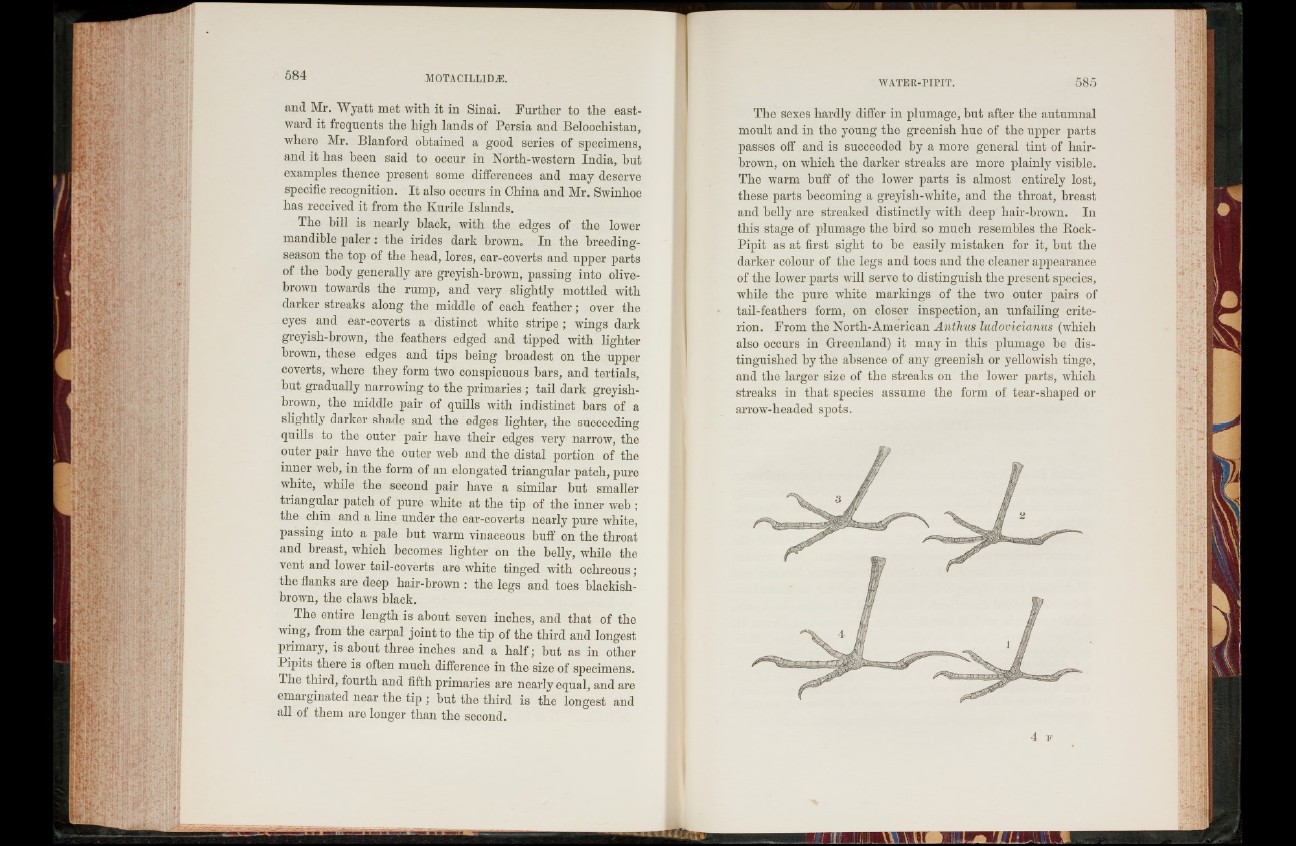
and Mr. Wyatt met with it in Sinai. Further to the eastward
it frequents the high lands of Persia and Beloochistan,
where Mr. Blanford obtained a good series of specimens,
and it has been said to occur in North-western India, but
examples thence present some differences and may deserve
specific recognition. I t also occurs in China and Mr. Swinhoe
has received it from the Kurile Islands.
The hill is nearly black, with the edges of the lower
mandible paler : the irides dark brown. In the breeding-
season the top of the head, lores, ear-coverts and upper parts
of the body generally are greyish-brown, passing into olive-
brown towards the rump, and very slightly mottled with
darker streaks along the middle of each feather; over the
eyes and ear-coverts a distinct white stripe; wings dark
greyish-brown, the feathers edged and tipped with lighter
brown, these edges and tips being broadest on the upper
coverts, where they form two conspicuous bars, and tertials,
but gradually narrowing to the primaries; tail dark greyish-
brown, the middle pair of quills with indistinct bars of a
slightly darker shade and the edges lighter, the succeeding
quills to the outer pair have their edges very narrow, the
outer pair have the outer web and the distal portion of the
inner web, in the form of an elongated triangular patch, pure
white, while the second pair have a similar but smaller
triangular patch of pure white at the tip of the inner web ;
the chin and a line under the ear-coverts nearly pure white,
passing into a pale but warm vinaceous buff on the throat
and breast, which becomes lighter on the belly, while the
vent and lower tail-coverts are white tinged with ochreous;
the flanks are deep hair-brown : the legs and toes blackish-
brown, the claws black.
_Tlie entire length is about seven inches, and that of the
wing, from the carpal joint to the tip of the third and longest
primary, is about three inches and a h a lf; but as in other
Pipits there is often much difference in the size of specimens.
The third, fourth and fifth primaries are nearly equal, and are
emarginated near the tip ; but the third is the longest and
all of them are longer than the second.
The sexes hardly differ in plumage, but after the autumnal
moult and in the young the greenish hue of the upper parts
passes off and is succeeded by a more general tint of liair-
brown, on which the darker streaks are more plainly visible.
The warm buff of the lower parts is almost entirely lost,
these parts becoming a greyish-white, and the throat, breast
and belly are streaked distinctly with deep hair-brown. In
this stage of plumage the bird so much resembles the Bock-
Pipit as at first sight to be easily mistaken for it, but the
darker colour of the legs and toes and the cleaner appearance
of the lower parts will serve to distinguish the present species,
while the pure white markings of the two outer pairs of
tail-feathers form, on closer insqiection, an unfailing criterion.
From the North-American Anthus ludovicianus (which
also occurs in Greenland) it may in this plumage be distinguished
by the absence of any greenish or yellowish tinge,
and the larger size of the streaks on the lower parts, which
streaks in that species assume the form of tear-shaped or
arrow-headed spots.